
 Data Structure
Data Structure Networking
Networking RDBMS
RDBMS Operating System
Operating System Java
Java MS Excel
MS Excel iOS
iOS HTML
HTML CSS
CSS Android
Android Python
Python C Programming
C Programming C++
C++ C#
C# MongoDB
MongoDB MySQL
MySQL Javascript
Javascript PHP
PHP
- Selected Reading
- UPSC IAS Exams Notes
- Developer's Best Practices
- Questions and Answers
- Effective Resume Writing
- HR Interview Questions
- Computer Glossary
- Who is Who
How to Identify Uppercase, Lowercase, and Proper Cases in Excel?
This article illustrates the proper way to identify that the provided string is an uppercase, lower, or proper case. To do so simply use three formulas: upper(), lower(), and proper(). To understand more thoroughly consider the below provided explanation more precisely. This article describes three examples, here each example illustrates the process of using every function individually.
Identifying data as uppercase, lowercase, and proper case is important when the user is cleansing the data in a large dataset, such as converting raw Excel sheet data into a meaningful full form to be used with power analytics tools.
Let's understand the text forms of uppercase, lowercase, and propercase:
Uppercase - "ABC"
Lowercase - "abc"
Propercase - "Abc"
Example 1: To identify the uppercase sentences or text written in the excel cells by using the excel formula.
Step 1
Assume that there is an excel sheet. This excel sheet contains some text data in C column, and in the D column will apply the data to check the uppercase values. Snapshot for reference is provided below:
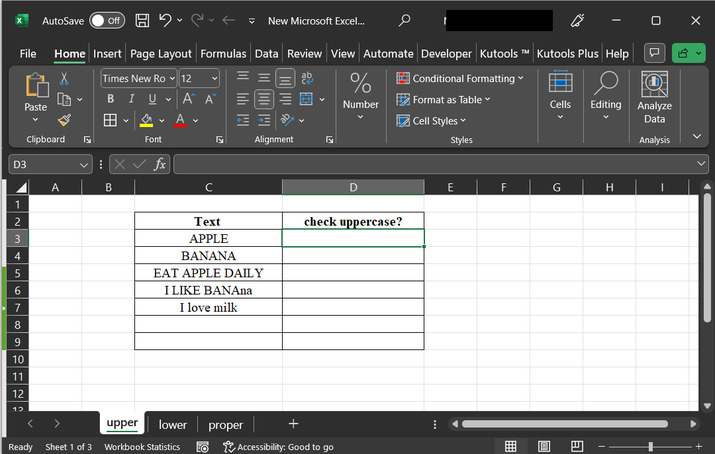
Step 2
After that go to the D3 cell, and type "=EXACT(C3,UPPER(C3))". A snapshot for reference is provided below:
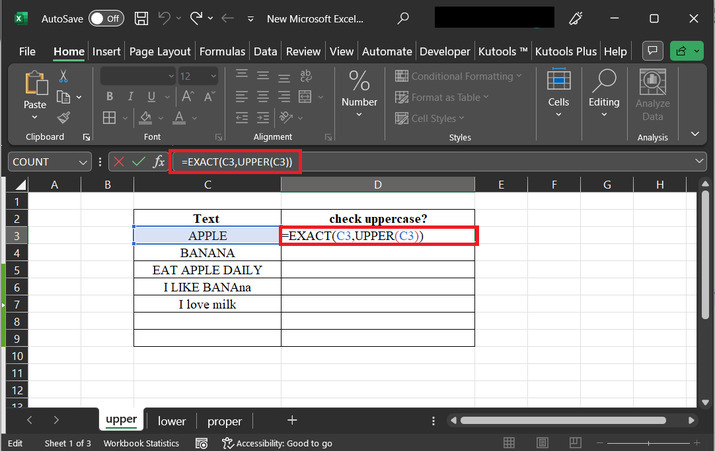
Explanation for formula "EXACT(C3,UPPER(C3))"
"C3": This cell reference contains a text string.
"UPPER(C3)": This is a function that converts the text in cell C3 to uppercase letters.
"EXACT(C3, UPPER(C3))": This function compares the original text in cell C3 with the text in cell C3 converted to uppercase using the UPPER function.
Step 3
When the user presses the "Enter" key. The result will appear as "true". It is because the data values available in the C3 cell are in the uppercase order. A snapshot for reference is provided below:
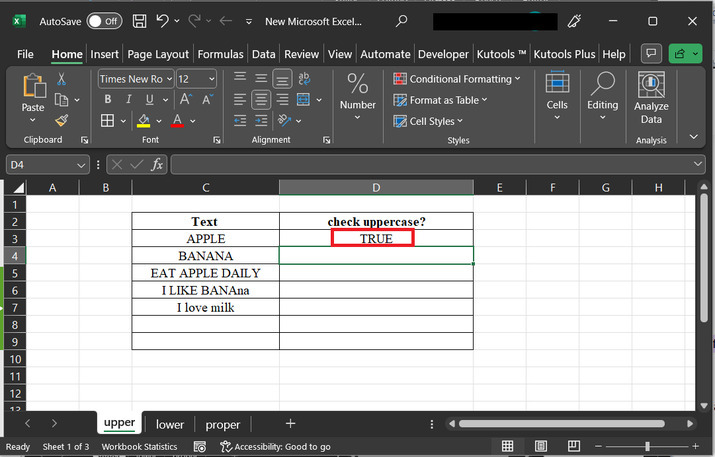
Step 4
Drag the fill handle to generate the required results. Snapshot for reference is provided below:
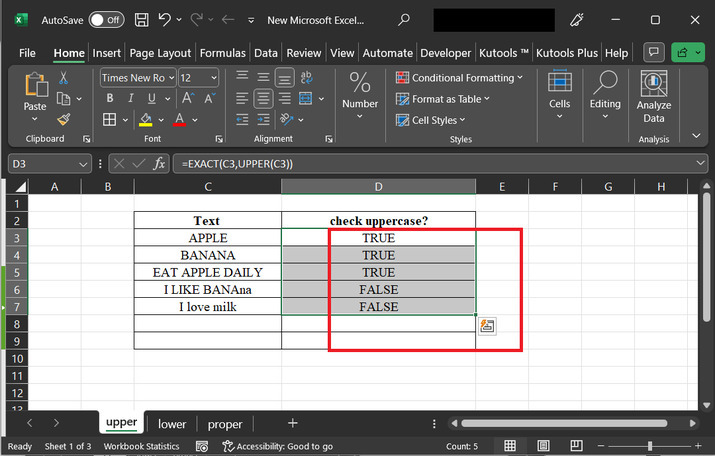
Step 5
After that go to the Home tab, click on the "Conditional Formatting" label, and then select the "Highlight Cells Rules" option. After that select the option "Equal to". A snapshot for reference is provided below:
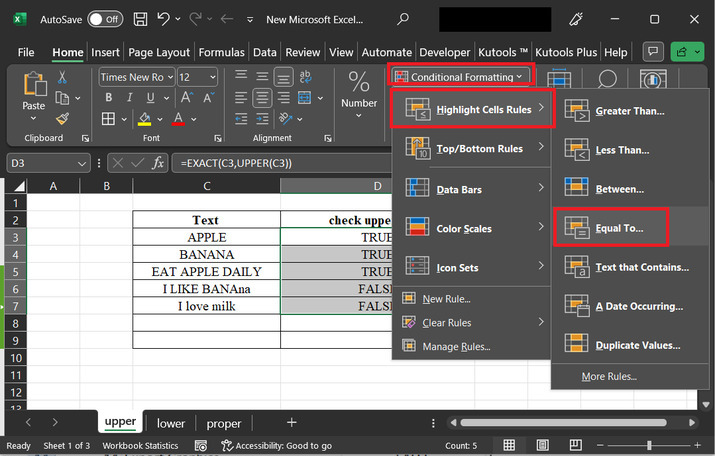
Step 6
The above step will display the "Equal to" dialog box. In the first input label, type "True", and in the second drop-down menu select the color user wants to apply to true values, here, will be selecting the "Green Fill with Dark Green Text" option, and clicking on the "OK" button. reference snapshot if depicted below:
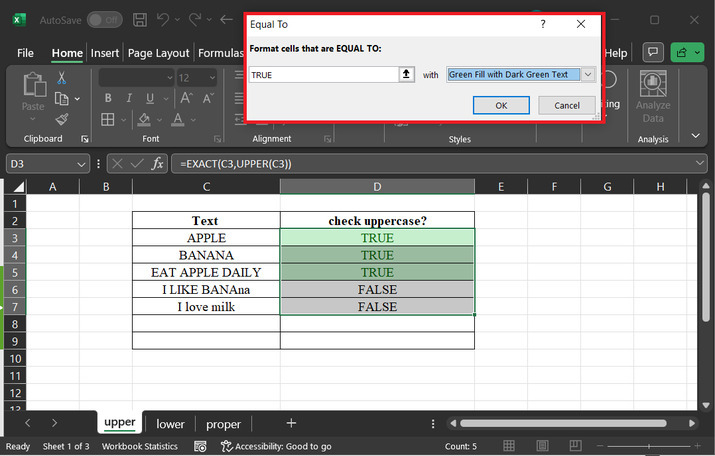
Step 7
The final generated output is provided below. After that the values with "True" input label, will display the green color.
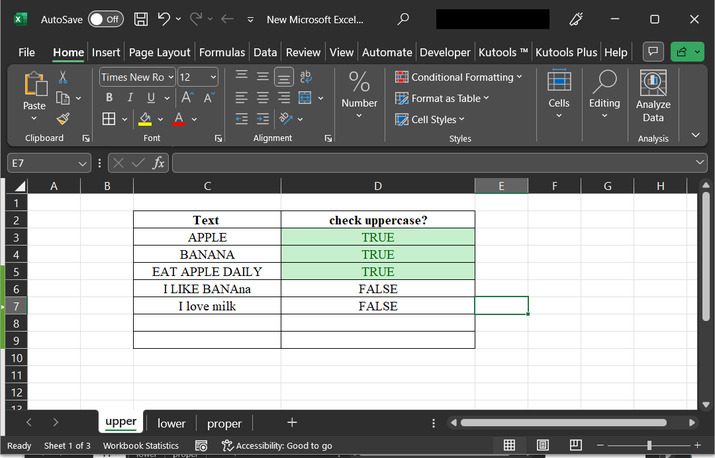
Example 2: To identify the lowercase sentences or text written in the excel cells by using the excel formula.
Step 1
In this example, the user will check whether the provided values are in lowercase or not. assume the below provided Excel spreadsheet. A snapshot for the same is provided below:
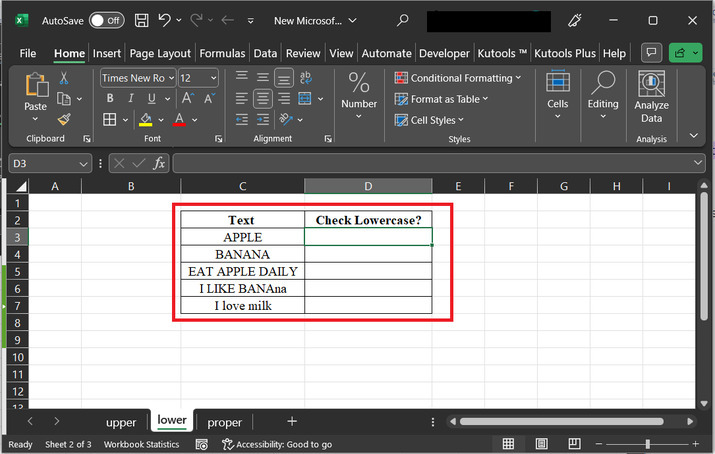
Step 2
After that go to the D3 cell and type formula "=EXACT(C3,LOWER(C3))". This formula will check whether the value of the C3 cell is lowercase or not.
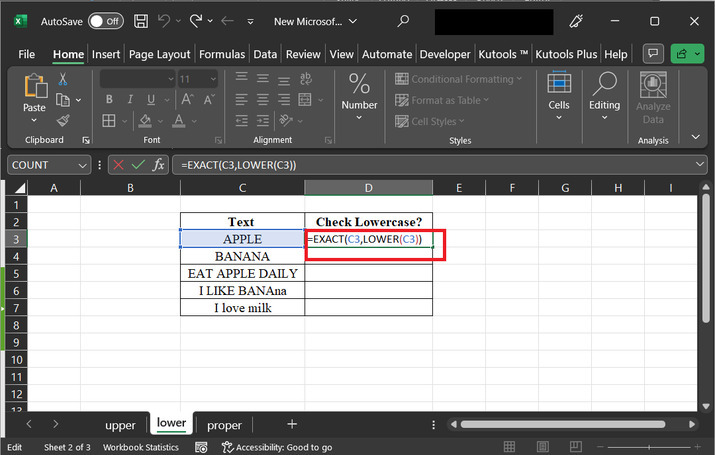
Explanation of formula "=EXACT(C3,LOWER(C3))"
"C3": This cell reference stores a text string.
"LOWER(C3)": This function converts the text in cell C3 to lowercase letters.
"EXACT(C3, LOWER(C3))": This function compares the original text in C3 cell with the text in cell C3 converted to lowercase using the LOWER function.
Step 3
The generated result for the D3 cell is false. As the data present in the C3 cell is in uppercase. Snapshot for reference is provided below:
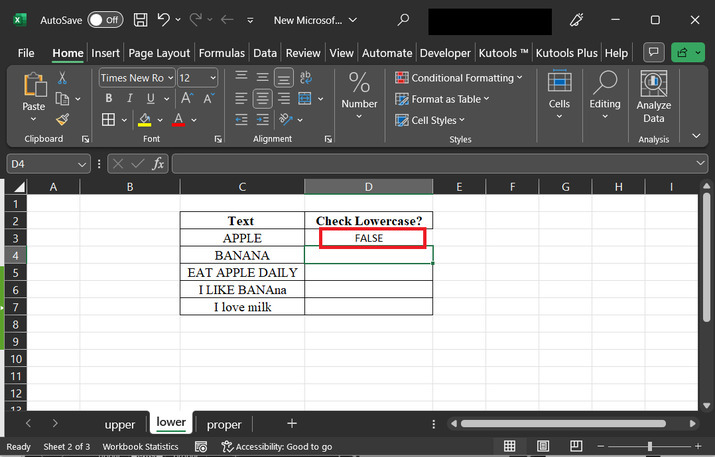
Step 4
Drag the fill handle to copy the same result to the bottom rows. Snapshot for reference is provided below:
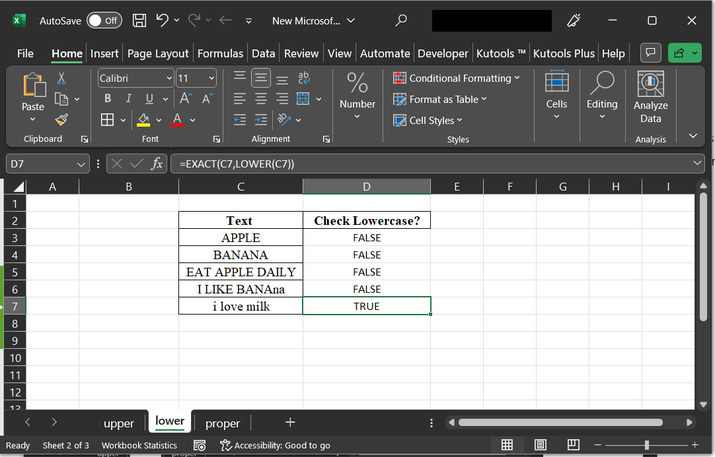
Step 5
After that go to the home tab, click on the "conditional formatting" label, and then select the "highlight cells rules" option. After that select the option "Equal to". Snapshot for reference is provided below:
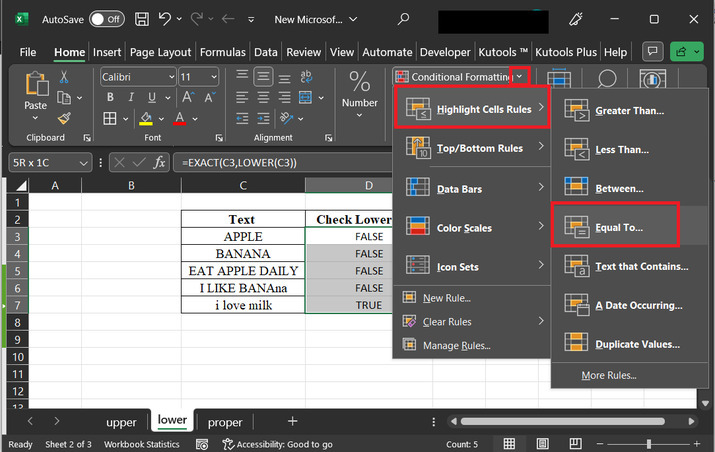
Step 6
The above step will display the "equal to" dialog box. In the first input label, type "true", and in the second drop-down menu select the color user wants to apply to true values, here, will be selecting the "Yellow fill with dark yellow text" option, and click on the "OK" button. Reference snapshot is depicted below:
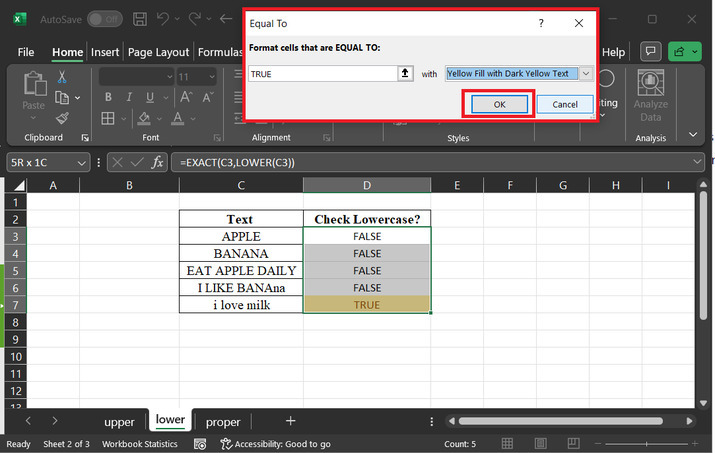
Step 7
In this step all the data values that contain true will be highlighted with the yellow color. Sanpshot for the same is provided below:
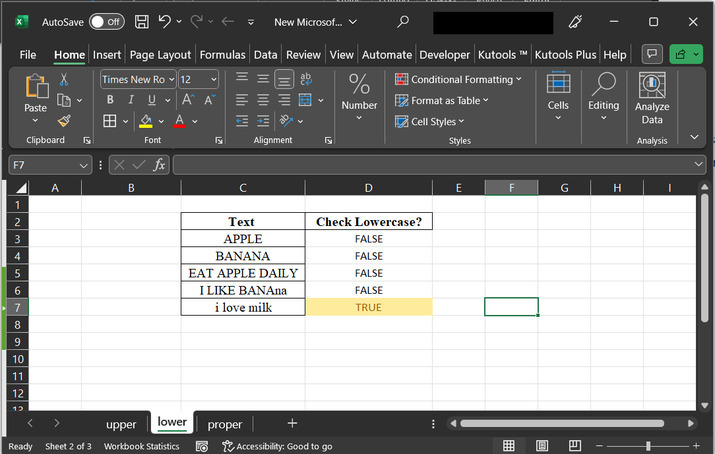
Example 3: To identify the proper case sentences or text written in the Excel cells by using the Excel formula.
Step 1
In this example, the user will check whether the provided values are proper cases or not. Proper case values are the ones that provide in the text form with the first alphabet of a word in uppercase and the rest in lowercase. For example, "Storage" is written in propercase. To understand the steps used below, assume the below provided Excel spreadsheet:
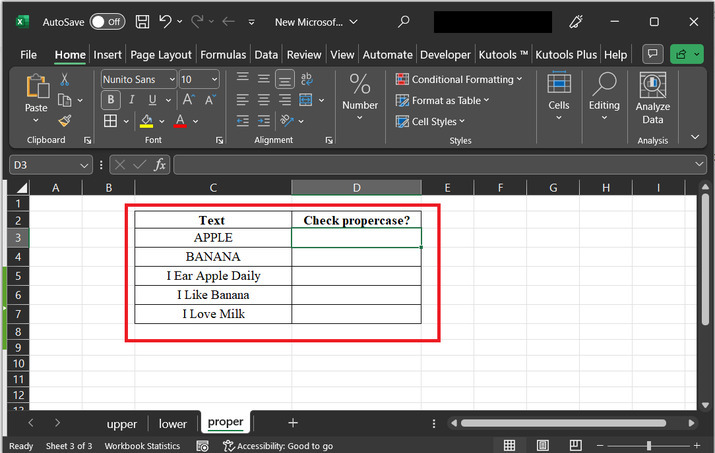
Step 2
After that go to the D3 cell, and type "=EXACT(C3,PROPER(C3))". Snapshot for the same is provided below:
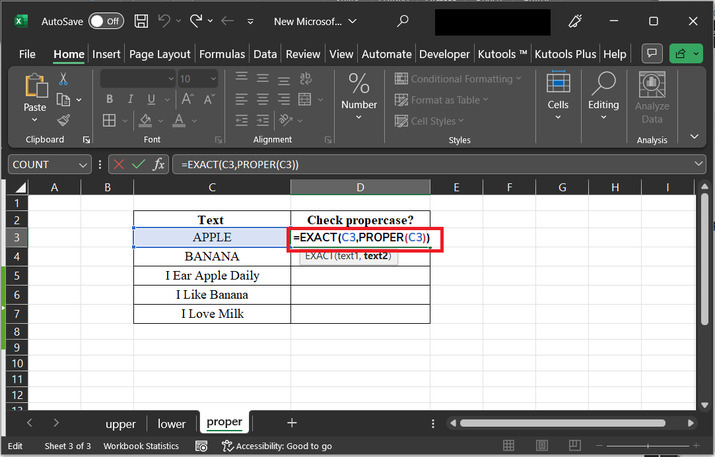
Explanation for formula "EXACT(C3,PROPER(C3))"
"C3": This is a cell reference that stores a text string.
"PROPER(C3)": This is a function that converts the text in cell C3 to proper case. In proper case, the first letter of each word is capitalized, and all other letters are converted to lowercase.
"EXACT(C3, PROPER(C3))": This function compares the original text in cell C3 with the text in cell C3 converted to the proper case using the PROPER function.
Step 3
Press the "Enter" key to obtain the required results. The generated result is false as the data provided in the C3 cell is in uppercase instead of the propercase.
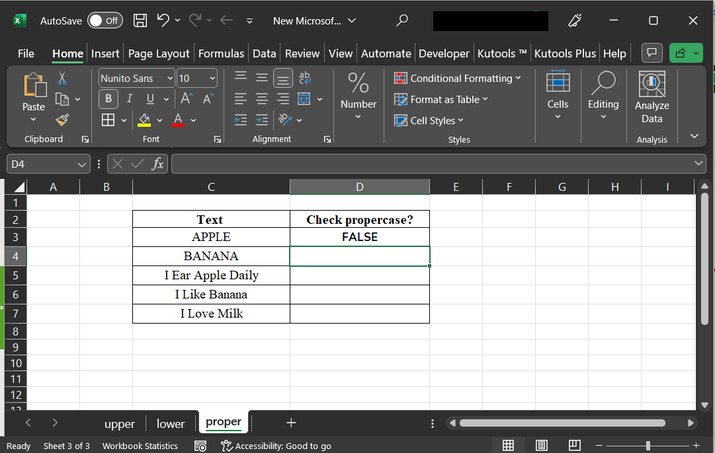
Step 4
Drag the hill handle to copy the same formula for other rows. Snapshot for the same is provided below:
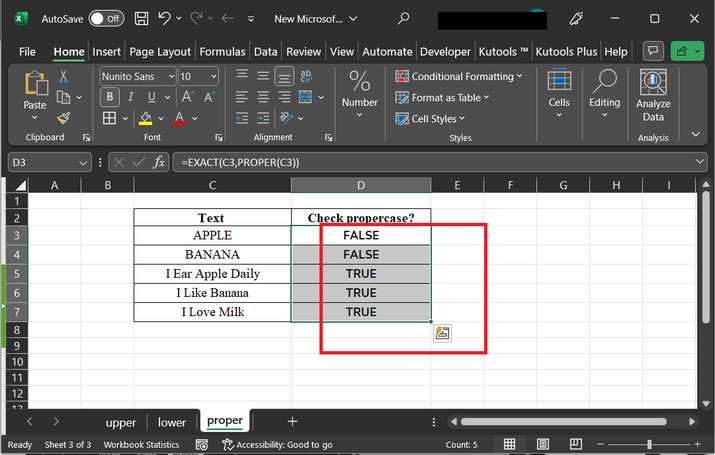
Step 5
After that go to the home tab, click on the "Conditional Formatting" label, anA snapshotd then select the "Highlight Cells Rules" option. After that select the option "Equal to". Snapshot for reference is provided below:
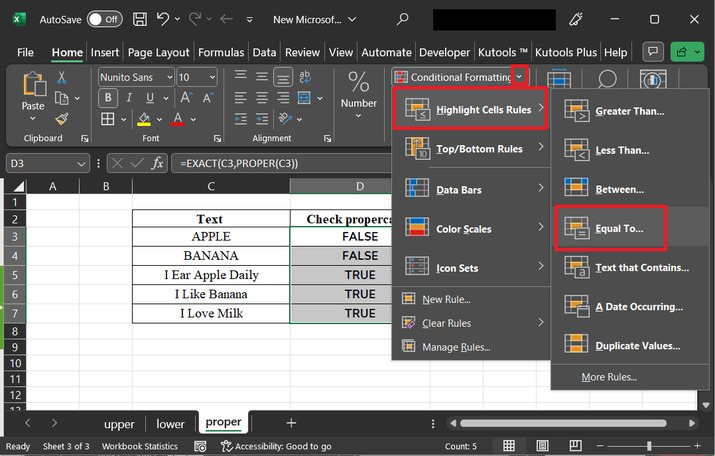
Step 6
In this step all the data values that contain true will be highlighted with the yellow fill with the dark yellow color, and click on the "Ok" button. Snapshot for the same is provided below:
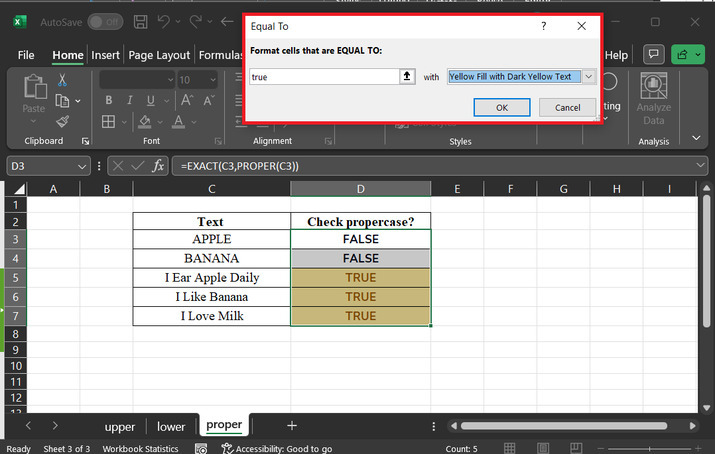
Step 7
All the highlighted values are listed below in the final output snapshot:
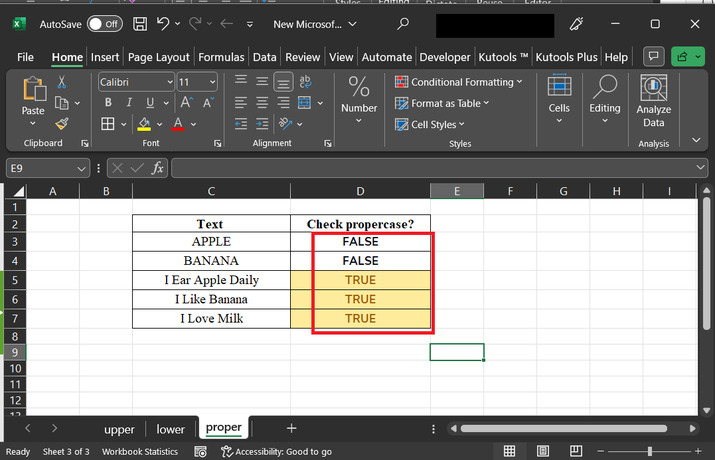
Conclusion
This article is a perfect solution to understand the process of identifying the available uppercase, lowercase, and propercase data. By simply using the available function such as upper(), lower(), and proper(). The provided explanation is easy to understand and apply.

